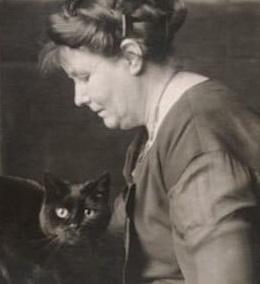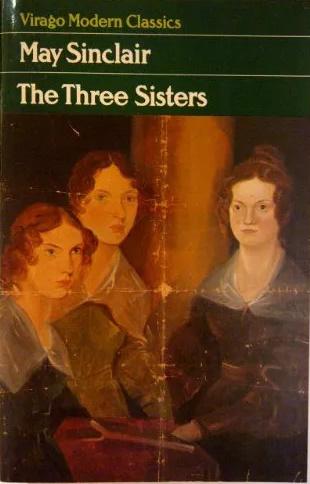Book Review by Alice :This is the story of three sisters and their pastor father who relocate to the tiny, isolated rural parish of Garth in Garthsdale. ‘A handful of gray houses, old and small and humble’; note Sinclair’s typical style – the triple adjective description of scenes and settings.
In many ways not much happens in The Three Sisters. It is more a forensic laying bare of the lives, thoughts, feelings and most importantly the motivations of those who make their lives in this beautiful, bleak location.
The sisters are intricately drawn: they are very different. Mary, the oldest, her father’s favourite, is reserved and composed, 27 and unmarried. Alice is 23, highly strung, artistic and emotional. And vulnerable to falling in love with the wrong man. It was Alice’s indiscretions in a previous parish and the ensuing shame that spurred her father, horrified by her behaviour, to uproot his daughters to this back of beyond. And there is Gwenda, the oldest, confident and adventurous, a free spirit and the only sister to love the rugged wildness of their new home.
The men in their lives are: Stephen Rowcliffe, the local doctor, who the daughters all fall for at one time or another, each expressing their own natures through the wiles they use to try to woo him, including: lies, subterfuge, feigning disinterest and illness, self-sacrifice and the enduring hope that offering bed, board and creature comforts will win him. Passion draws him but home comforts, routine and security tie him in the end.
There are echoes of King Lear in the novel as the wildest, most rebellious sister turn out to be the most compassionate and dutiful in the end and those who seemed most reliable and pliant in the beginning end up manipulating and betraying the others to achieve their own ends.

Another man, the wonderfully named Jim Greatorex, is rough and ready; a cross between Heathcliffe and Gabriel Oakes, is a promiscuous drunkard who loves nature. His wildness eventually tamed by falling in love with Alice, who at first repelled by his roughness but then drawn by his gentleness and the fact she needs a good tenor for her choir, she discovers scruffy Jim ha a great voice. They rehearse surreptitiously in her father’s church, hidden away in the organ stalls where their illicit romances blossoms.
All Jim’s speech is written in dialect. This is hard to understand and doesnot add anything to the characterisation. There may be better, more subtle ways of describing this down-to-earth sheep farmer as there is a risk of describing Jim as a caricature.
Jim and Gwenda share a love of this rugged landscape, or of watching the moon and observing the changing seasons of the plants and animals. There’s a metaphor in the novel of the white flowering thorn-trees which grow on the bleak roadside and waft their sour scent on the breeze, mirroring cycles of change, the flowering and decay occurring in the everyone’s lives.
Central to the sisters lives is their father, the vicar, James Carteret, a patriarchal bully, who rules the house with an iron fist. ‘Patience and Wisdom’ is his motto, he is narcissistic, status obsessed, unable to understand or empathise with his daughters and seeks only to control them through punishment and rigid ‘routines’ such as enduring his dreaded ten o’clock prayers.
The characters are richly described with interesting layering and exposing of their deepest all-too-human motivations and needs. But it is a depressing book; a forensic exposition of three women’s lives, exposing their limited life chances and choices. Suggesting that a wrong turn or flawed decision early in life can adversely affect the rest of your life; that choosing duty and self-sacrifice can be the worst choices you can make. And it is too long, my copy 363 pages, with settings and scenes described in minute details with multi-advective sentences.
At times, reading The Three Sisters felt like eating an enormous meal which took me days to finish and digest. In many ways it is a brilliant novel and I got to know the characters well, almost too well, but in the end, I wished I hadn’t read it. The after-taste was too bleak and depressing, just as sour as the flowering thorn-trees themselves.

